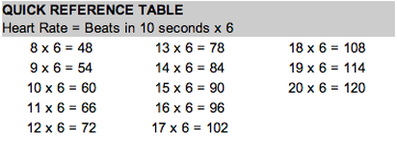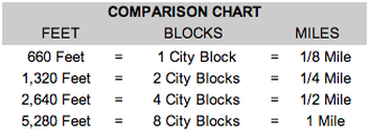Exercise and Your Heart
Exercise and Your Heart
Exercise can improve the way we look and feel. It also has other benefits:
- Exercise helps lower blood pressure and resting heart rate. It can also improve blood flow to the heart.
- Allows the heart to do work with less energy
- Can help increase HDL, the "good" cholesterol level in the blood
- Improves flexibility of the muscles and joints, building muscle strength and tone
- Exercise and a proper diet aid in weight loss
- Relieves stress and tension
- Relaxes the body and improves sleep
What kind of exercise is best for the heart?
Exercise must be tailored to each person's needs. The type of exercise your physician suggests is called aerobic or isotonic exercise. Examples of aerobic exercise include walking, jogging, cycling and swimming. These exercises increase the flow of blood to the heart muscle and body tissues.
Patients with heart disease should initially avoid isometric exercise. Isometric activities include weight lifting, pushing against an immovable wall or straining to open a window. The pressure or tension created by this activity:
- Decreases blood flow to the body
- Causes a sudden increase in heart rate and blood pressure
- Can deprive the body tissue of oxygen
Avoid straining and heavy lifting. Instead, look for ways to perform aerobic exercises.
After about one month of regular aerobic exercise and with physician approval, light resistive weight training may be safely started with close supervision and strict guidelines. Light resistive weight training should always be used with (not in place of) aerobic exercise.
Activity and exercise after a cardiac event
Remember, activity and exercise after a cardiac event must be done in a safe manner, beginning at a low level and gradually increasing to a higher level. While you are in the hospital, the Cardiac Rehabilitation staff may work with your physician to develop an exercise program to meet your needs. They will also help you safely increase your level of activity.
When you are ready to go home, your physician and/or the Cardiac Rehabilitation staff may give you a home walking program tailored to your needs. You will also be given a target pulse rate to follow. Your pulse will be your guide to activity. If your pulse exceeds the target rate, you know that you are doing too much exercise and that you need to slow down. If your pulse never reaches the target range and you feel as if you are not working, you may need to increase your pace.
It is important to remember that exercise must be done on a regular basis to gain the full benefits of an exercise program.
General activity guidelines
Avoid crossing your legs while you are in bed or sitting in a chair. Pressure on the area behind your knee may decrease blood flow in the legs. Relax for at least 30-60 minutes after eating before starting any vigorous activity. Avoid unusual tensing and straining of the body.
- Avoid lifting, pulling or pushing anything heavy.
- Do not open stuck windows.
- Do not lift more than:
- 10-15 pounds the first six weeks after heart surgery (such as groceries, wet laundry)
- 15-20 pounds 6 to 12 weeks after heart surgery
- 10 pounds after a heart attack
- Check with your physician for lifting guidelines if you have had angioplasty or stenting placement only.
- Do not unscrew jar lids or push open heavy doors.
- Do not move furniture, change sheets or vacuum rugs.
- Avoid straining when having a bowel movement. Ask your physician about a laxative or stool softener if you become constipated.
- You may do light housework (dusting, washing).
If you've had heart surgery:
- Do not walk your dog on a leash for about three months due to possible pulling and jerking.
- Do not drive for at least four weeks.
- Put your feet up and relax! Take naps or rest periods as needed.
- No sauna, whirlpool or steam room.
- You may take a warm shower.
- Avoid hot water and use lukewarm water.
- A shower that is too warm may cause you to feel dizzy or unusually weak.
- Consider buying a shower seat as a safety measure.
- Have someone nearby to help you if needed.
- You should not shower if you are tired, having chest pain or are short of breath.
Ask your physician when you may resume sexual activities. In general, it is safe to resume sexual activity if you are able to climb two flights of stairs without chest pain, shortness of breath or dizziness. To conserve energy during sexual activities:
- Rest prior to sex.
- Wait at least 1-2 hours after a heavy meal.
- Take a non-dominant role if on a weight restriction.
- Do not use a position where you support your weight with your arms.
- Use familiar positions that are less strenuous for you.
Points to remember about exercise:
- Warm up first for three to five minutes by starting the activity slowly, then gradually increase the speed and intensity.
- Take your pulse before, during and after exercise.
- Do not exceed your target heart rate. If your heart rate goes too high, slow down.
- Cool down for three to five minutes by slowing your pace before stopping the exercise.
- Stop exercising if chest pain or discomfort, shortness of breath, leg cramps, dizziness, nausea or palpitations occur. You may need to call your physician.
- Do not hold your breath while exercising.
- Wear loose-fitting clothes that do not restrict body movements.
- Wear proper-fitting, comfortable exercise shoes.
Taking your pulse
Since your pulse is one guide to exercising at the right pace, it is important that you learn how to take it yourself. Your pulse is simple to take; it can be felt with every beat (or pulsation) of the heart in various arteries throughout the body.
To take your pulse, keep a watch or clock with a second hand or a stopwatch in sight. Locate an area to feel the pulse beats. The pulse beats can be felt over any number of arteries. The radial artery in the wrist area is one of the safest sites for taking the pulse. This is called the radial pulse.
- Find the radial pulse by putting two or three fingers on the palm side of the wrist, nearest the thumb. Press lightly, moving your fingers just a little until you find the beating. If you press too hard, you may stop the flow of blood, and there will be no pulse. Never use your thumb, as your thumb has its own pulse beat.
- When you have found the pulse, notice the rhythm. Try to notice if it seems steady or if it is irregular. A 10-second count is recommended with exercise.
- Count the number of beats you feel in 10 seconds and multiply by six to determine your heart rate for one minute. See the Quick Reference Table below. If you have a very irregular heart rate, take your pulse for 30 seconds and multiply by two.

Your pulse should feel regular and rhythmic, like the beat of a drum. If your pulse is irregular, notify your physician.
Home walking program
Your home walking program should begin the day after discharge from the hospital. Walking may be done indoors or outdoors. Indoor walking can be done in your home, in building hallways or in a shopping mall.
If you will be walking outdoors, follow these guidelines:
In winter: No outdoor exercise is recommended if the temperature is less than 20 degrees or if the wind chill factor is less than 10 degrees.
In summer: No outdoor exercise is recommended if the humidity is greater than 75 percent or if the temperature is greater than 80 degrees. The best times for exercising are early morning or early evening.
- Start by walking the same distance or amount of time that you did on your last day in the hospital. Keep your speed slow. Once you've worked up to your recommended distance or time, gradually increase your pace. It's better to walk for a longer period of time than to walk too fast and tolerate less.
- When walking a shorter distance or time, plan four to six walks a day. Increase your distance/time at least every other day as tolerated. As your long distance/time increases, decrease your number of walks to two to three times a day.
- Gradually increase your distance/time until you are walking twice a day. Hold at that level. Remember to warm-up for three to five minutes before exercising and cool-down for three to five minutes after your exercise routine.
- Take your pulse (heart rate) before walking, halfway through your walk and when you are finished with your walk.
- Your heart rate should be no greater than:
- 10-12 beats from resting if you've had a heart attack or are being treated for angina.
- 12-18 beats from resting if you have had heart surgery.

Record your walks every day. Take your home exercise log to follow-up appointments with your physician.
If you have had angioplasty or stenting only (no heart attack), ask your physician for guidelines.
If your physician has prescribed nitroglycerin tablets for you, always carry them with you on your walk. If you have signs of angina (chest, arm, neck, or jaw pain or discomfort, or the pain that you know as your heart pain), STOP WALKING AND SIT DOWN. If the angina is not relieved after a couple of minutes of rest, take a nitroglycerin tablet under your tongue. You may take up to three nitroglycerin tablets, each five minutes apart.
If the discomfort is not relieved after a total of three nitroglycerin tablets, call 911 or the emergency number in your area or go to the nearest emergency room. Do not drive yourself. If the symptoms are relieved, you should still call your physician.
If any of the following persist, contact your physician:
- Shortness of breath
- Feeling faint or dizzy
- A very slow or very rapid or irregular heartbeat
- Excessive fatigue
- Nausea or vomiting
- A cold sweat
- Other symptoms that are similar to or remind you of any prior angina attacks

